Your paintbrush should feel like an extension of your arm. But, all the different kinds of artist brushes which are available can sometimes only add confusion to the painting process, rather than making it easier.
In this post, I discuss the different kinds of artist paint brushes that are available for you to use.
- Anatomy of an Artist Paint Brush
- Paint Brush Bristles
- Paint Brush Shapes
- Paint Brush Sizes
- Which Artist Paint Brush Should You Use?
- Which Brand of Artist Paint Brush Should You Use?
- Paint Brush Sets
- Paint Brush Storage
- Caring for Your Paint Brushes
- Want to Learn More?
- Thanks for Reading!

Anatomy of an Artist Paint Brush
Here is the anatomy of a paint brush for those of you who are not familiar with the terminology:
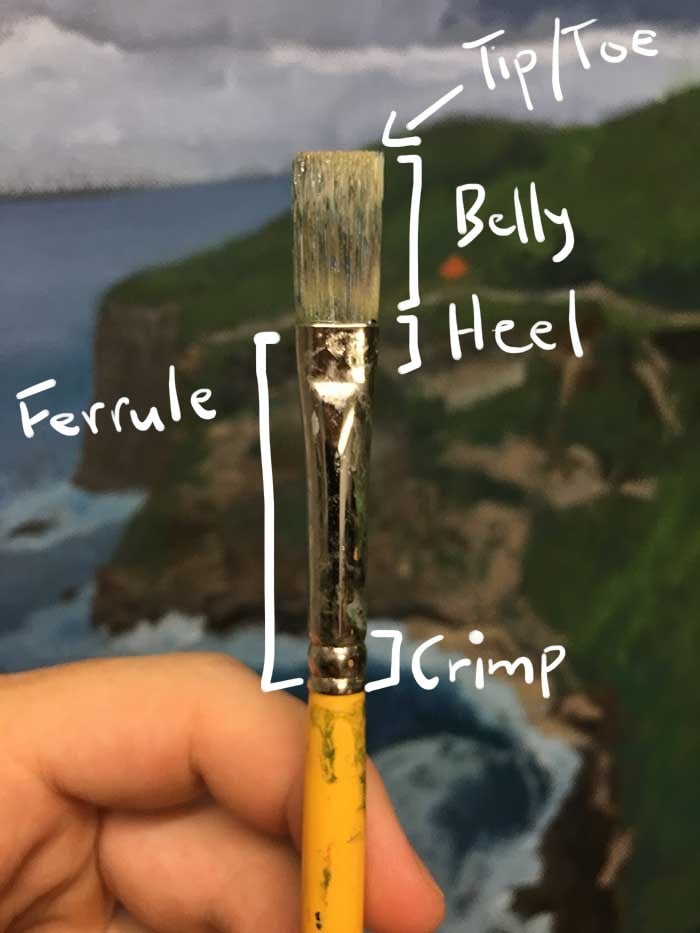
Paint Brush Bristles
Artist brushes come with many different types of bristles. The bristles will generally determine what medium a brush is suitable for. For example, oil painting requires bristles which are resilient and have a nice spring. Acrylic paint is not as harsh so you can use bristles which are a bit finer. Watercolor painting requires soft bristles which can hold lots of water.
Bristles for artist brushes come in two forms – synthetic and animal. Animal hair brushes tend to be more expensive but they can hold and apply paint in a way which is not possible with synthetic brushes. However, synthetic brushes have come a long way. I make use of both synthetic and animal hair brushes for my paintings.
Here is a summary of the different bristles:
Synthetic: Economical and versatile options for all painting mediums. Most synthetic brush manufactures will combine synthetic bristles with animal bristles so you get the best of both worlds. I would avoid cheap synthetic brushes as they are not durable and lose shape quickly.
Hog: Stiff, springy and economical. Hog hair brushes tend to do most of the heavy lifting in oil painting due to their durability and stiffness. I enjoy using hog hair brushes for general oil painting work, but not so much for the finer details.
Sable: Sable is not actually made from sable hair but rather from the tail of a species of mink (a member of the weasel family) found in Northeastern China and Siberia. Sable brushes are extremely fine and springy and hold lots of water, making them perfect for watercolor painting and fine oil/acrylic painting.
Squirrel: Very soft hair with little snap due to a lack of resistance. Squirrel hair is suitable for watercolor painting, inking and any other low-resistance mediums.
Badger: A popular hair for oil painting. Badger hair brushes tend to be the thickest at the tip of the brush and thinner around the belly, making them perfect for general and broad brushwork.
Mongoose: Sturdy and resilient hair that is used in oil and acrylic painting.
Paint Brush Shapes
Filbert brushes are a personal favorite due to their versatility. They are somewhere between a round and flat brush. The curved tip allows for soft brushwork and blending. I use the filbert brush for any general brushwork.

Round brushes have a large belly and a long tapered end. They are extremely versatile and can be used for long, bold strokes and detail work.
A round brush made with sable hair comes to a very fine tip and can be used for delicate brushwork.

Flat brushes have a flat tip and can be used to make thick, consistent strokes or thin lines. Flat brushes are great for blocking in solid shapes of color (i.e roads, fences, buildings, etc).

Bright brushes are pretty much a flat brush with shorter bristles. They are useful for short, controlled strokes.

Fan brushes are more of a specialty brush. They have a range of special uses, such as painting the leaves on trees or adding texture to grass or rocks. But the fan brush is not limited to these special occasions. You can make use of the fan brush whenever you need scattered and broad brushwork.

Angular brushes have bristles that are cut at a slight angle, with one side of the tip longer than the other. I do not use these brushes so I will not comment on how you can use them.
Paint Brush Sizes
There is no industry standard for brush sizes, so it is best to get familiar with one brand.
It is important to have a range of small, medium and large brushes. In particular, you should make sure you have lots of medium to large brushes as these should be doing most of the heavy lifting in your paintings.
I generally recommend that you take the largest brush you feel comfortable using, then use one size up from that. The benefits of using large brushes include:
- Large brushes will ensure you focus on making economical and meaningful strokes. Every stroke will have influence with a large brush.
- By using only small brushes, you tend to get caught up in needless details and miss the overall statement of your painting.
- Large brushes are a great time saver, as you can quickly cover the canvas.
Even in the most intricate looking paintings, you will find that the brushes used were probably not these tiny round brushes. Take a look at the beautiful painting below by John Singer Sargent. Under that I provide a close-up which shows his broad and surprisingly thick strokes of color made with what I assume to be medium sized brushes.
What you should learn from this is – instead of trying to make your painting seem realistic up close, aim to make it seem realistic from afar.
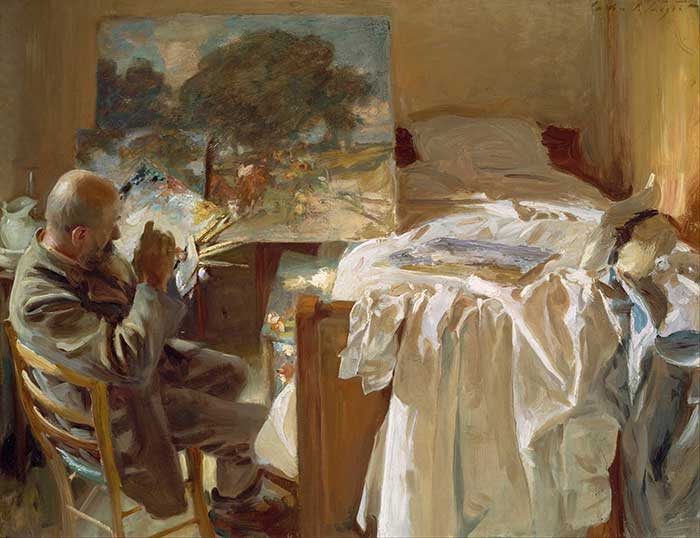

Which Artist Paint Brush Should You Use?
Personally, I use paint brushes as follows:
- For staining the canvas I use the largest flat or filbert brush I have.
- For sketching the composition I use a medium sized round brush, or sometimes even a fan brush if I want a very rough landscape sketch.
- For blocking in general colors and shapes I use a medium to large filbert. Sometimes I will use a flat brush if the shapes are very angular.
- For adding detail I use smaller filbert and round brushes. I also use the fan brush in certain situations, such as for painting leaves, grass or water.
- For signing the painting and adding very fine details I use a small round brush.
Which Brand of Artist Paint Brush Should You Use?
I have had experience with brushes from most of the top brands such as Princeton, Winsor & Newton, Royal Langnickel and Old Holland. Most of these brands have a premium line of brushes which seem to be fairly consistent in quality.
It really comes down to personal preference. I have heard some great things about Rosemary & Co but I have yet to try those brushes out. I will place an order for some of those brushes soon and will let you know how I go.
Paint Brush Sets
If you are just starting out in painting or you just want some extra brushes, you may want to look into buying a brush set. These will give you a wide range of brushes which you can get a feel for. However, I have found the quality of many popular brush sets to be on the lower end. For very high-quality brushes you will usually need to purchase them individually. But there are premium brush sets like below if you want to treat yourself.
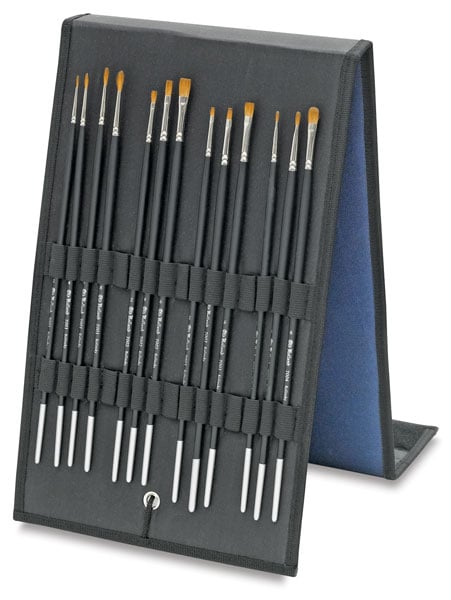
Paint Brush Storage
It is important that you keep all your brushes organized to some extent. Otherwise, they will probably go missing or get damaged. I suggest you invest in a simple brush container or you could even just use an old mug.
Caring for Your Paint Brushes
Taking proper care of your brushes is essential if you want them to last for more than just a few painting sessions. Just remember that the prevention of brush damage is much easier than the restoration of it.
I wrote more about cleaning your brushes here.
Want to Learn More?
You might be interested in my Painting Academy course. I’ll walk you through the time-tested fundamentals of painting. It’s perfect for absolute beginner to intermediate painters.
Thanks for Reading!
I appreciate you taking the time to read this post and I hope you found it helpful. Feel free to share it with friends.
Happy painting!
Dan Scott

Draw Paint Academy
About | Supply List | Featured Posts | Products
Affiliate disclosure: There are affiliate links to recommended products in this post (Amazon & Dick Blick). If you purchase through any affiliate links I will receive a small commission at no additional cost to you. These funds are used to help grow this website and spread art education to people around the world. Thanks!

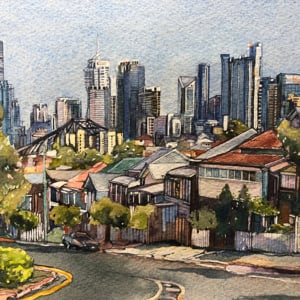
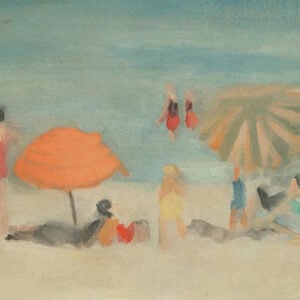
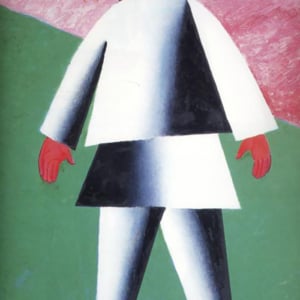

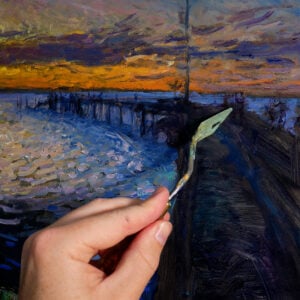
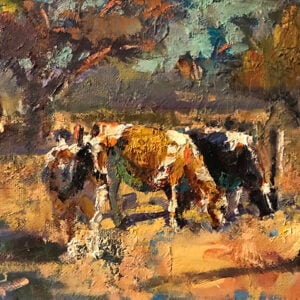
thanks for your your info but can you explain the sizing of brushes please-seems very confusing.
Crystal
Hi Crystal. Most brands will record the size of a brush as a number. For example, a filbert brush size 02.
The problem is, there is no universal standard for brush sizes between brands. What that means is a size 02 filbert from Winsor and Newton may be completely different to a size 02 filbert from Pinceton.
So instead I take a more general approach when talking about brush sizes – small, medium and large. I just use common sense when determining if a brush is small, medium or large.
Let me know if have more questions.
Thanks!
Dan
Do you use 1/4 flat paint brush or 12 bright paint brush
Which watercolor brushes do you use for which parts of the painting? Which brushes do you use for the background in a watercolor. How many brushes does a beginning watercolorist need?
Hi. Just want to tell you that I used your article in my blog. I DID GIVE YOU 100% TOTAL REFERENCE! I did not take the credit. If for some reason you want to check: stillblooming-scribbleit.blogspot.com. If you do have an issue with my not getting your permission first, I will take it down.
thanks for sharing this tips
Great information!! I really enjoy reading this blog information. Thanks for sharing this informative information.
Great information!! Thanks for sharing this informative information. I really enjoy reading this blog information.
Rosemary and Co. is great! I had their eclipse and hog bristle line from an Andrew Tischler set I wanted to try. And they are by far the favourite of the massive collection of brushes I’ve gone through.
Great tips! Your tips can make the paintwork very much easier. Thanks for sharing these tips!
Very informative article
Thanks a ton
I am a beginner will try and learn
You though made it easy
Thanks a ton
Thank you so much – I am a beginner, trying to paint clouds! I watched a tutorial which mentioned brush types I did not know that existed like a blending brush or a fan brush. I searched fro brush types and found this site. THANK YOU
I’m an amateur painter but love learning about the effects you can get with color and brush sizes. This was a great help. At the moment I am trying to touch up a large camel from a church nativity set. The blanket is difficult because it goes from the saddle all the way to the floor with many flowing folds. The shading is difficult. Thank you for this post.
Yet another article claiming to tell you what brushes you need yet only tells you the million brushes that exists and are available on the planet…
Can you possibly be more specific and exact and just give a complete beginner the essential brush types and sizes needed to get started please? What would be the essential 6 brushes in this list?
Thanks for your info. Question, I have brushes with handles the color of light wood, deep red, green, and 2 with black wood.
Are the colors representing something about media for which they are recommended?
Thanks,
Tom Eaton
Eastern Poland
Hi Tom. Interesting question. I’m not sure as I don’t have this with my brushes. You would be best to the brush maker to confirm.
Great post! Painting brushes are truly the unsung heroes of every artist’s toolkit. Your blog beautifully captures the essence of these versatile tools and how they breathe life into our artistic creations.
The variety of brush shapes and bristle types allows us to achieve different textures and strokes, adding depth and dimension to our masterpieces. Have you seen these models https://www.montmarte.com.au/collections/painting-brushes ?